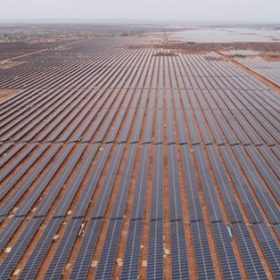India can become electric vehicle manufacturing hub within five years: Nitin Gadkari
The industry needs to cut a dependence on electric vehicle battery imports from China, according to the road transport minister, who said the government is looking to support research into alternatives to lithium-ion technology.
Supply chain concerns will drive EV battery recycling policies
With electric vehicles starting to gain traction, the International Energy Agency’s updated, ten-year e-mobility forecast has suggested geopolitical and economic concerns will trump environmental niceties when it comes to encouraging recycling. But what price ever-cheaper batteries?
Azure Power Q4 revenues up 29%, but net loss at Rs 394 million
The New Delhi based developer posted a net loss of Rs 394 million (US$5.2 million) for the three-month period from January to March, mainly on account of higher charges amounting to Rs 551 million (US$ 7.3 million) that were partially offset by higher revenue.
Bringing back India’s solar sector to the front foot in 2021
The ‘175 GW by 2022’ renewable energy target seems unachievable, necessitating the benchmark be moved to ‘450 GW by 2030’ instead. But even that will require the sector to move back to the front foot from 2021.
Historic-low interest rates will power ahead astonishing solar cost reductions
An Ieefa report has suggested the cost of generating electricity from solar will be near zero in the world’s sunniest regions by 2030-40 – despite what the naysayers at the International Energy Agency might think.
Ministry moves to fend off predatory moves for Covid-weakened solar businesses
Foreign direct investment into Indian solar concerns from China and other neighboring countries will now have to secure the approval of the Ministry of New and Renewable Energy.
Solar costs have fallen 82% since 2010
The levelized cost of energy generated by large scale solar plants is around $0.068/kWh, compared to $0.378 ten years ago and the price fell 13.1% between 2018 and last year alone, according to figures released by the International Renewable Energy Agency.
Bridge To India lowers renewable outlook for 2020-24
The Indian renewable energy market is poised for a significant contraction during the five-year period due to weakening power demand growth, deteriorating financial condition of Discoms and further constraints in debt financing.
Decelerating PV module prices may start increasing in fourth quarter
Market dynamics may again alter the global supply-demand picture for solar modules, leading to an increase in prices or price stabilization.
Covid delayed 63% of India’s utility-scale solar in first quarter
Covid-19-prompted disruption severely impacted solar installation during January-March, 2020 as the country added only 689 MW of utility-scale PV against 1,864 MW scheduled to be commissioned.















